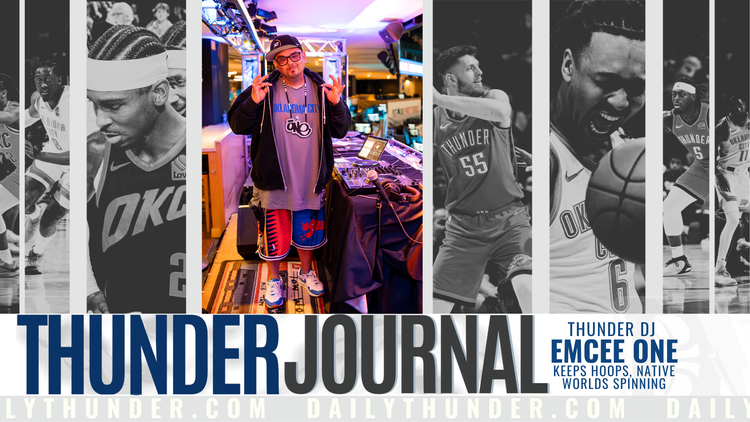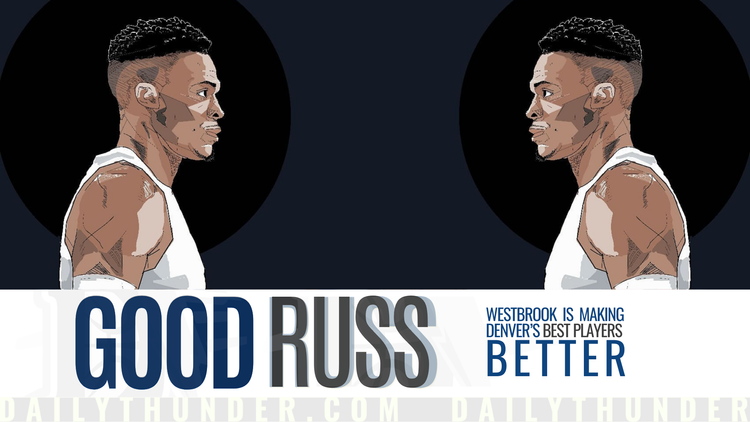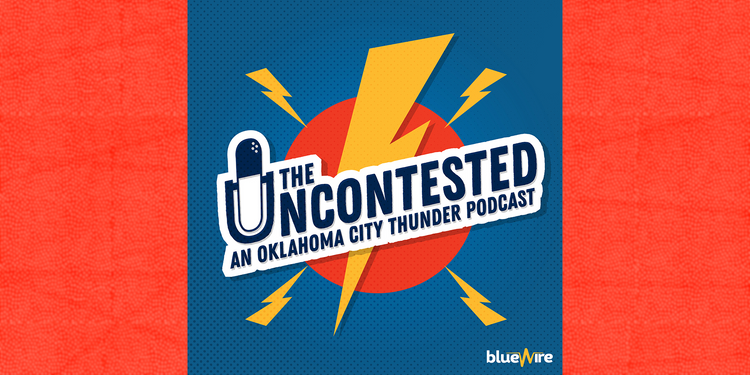More Than a Uniform: The Thunder’s Continued Dedication to Native Communities
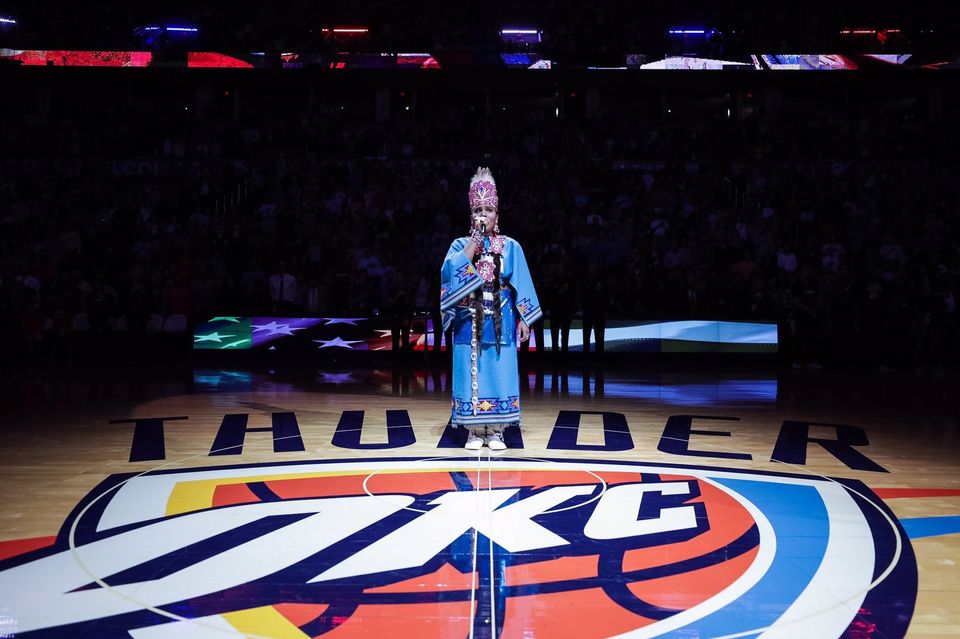
Since their move to the state capital in 2008, the Thunder has continually embraced the Oklahoma way of life. Their debut marked the first time a professional sports team found a permanent home in the state. Sure, college football is a big deal and minor league baseball is a fun time if you’re near Tulsa, but this basketball team really has painted everything in the state a shade of orange and ‘Thunder Blue’.
The most unique aspect of Oklahoma is its dense Native American population. Out of the fifty states that make up this country, Oklahoma is the only one that was formerly called ‘Indian Territory’. Various hardships brought different Native communities to the land that was originally only occupied by the Kiowas, Pawnees and Delaware people.
Forced removal from other areas of North America forced more tribes to join the Kiowas, Pawnees, and Delaware on the land that would later become Oklahoma. Even today, thirty-nine Native American tribes and their governments call this place home. This explains why, for a state of only 4 million residents, it contains the second largest Native American population in the country, just behind California.
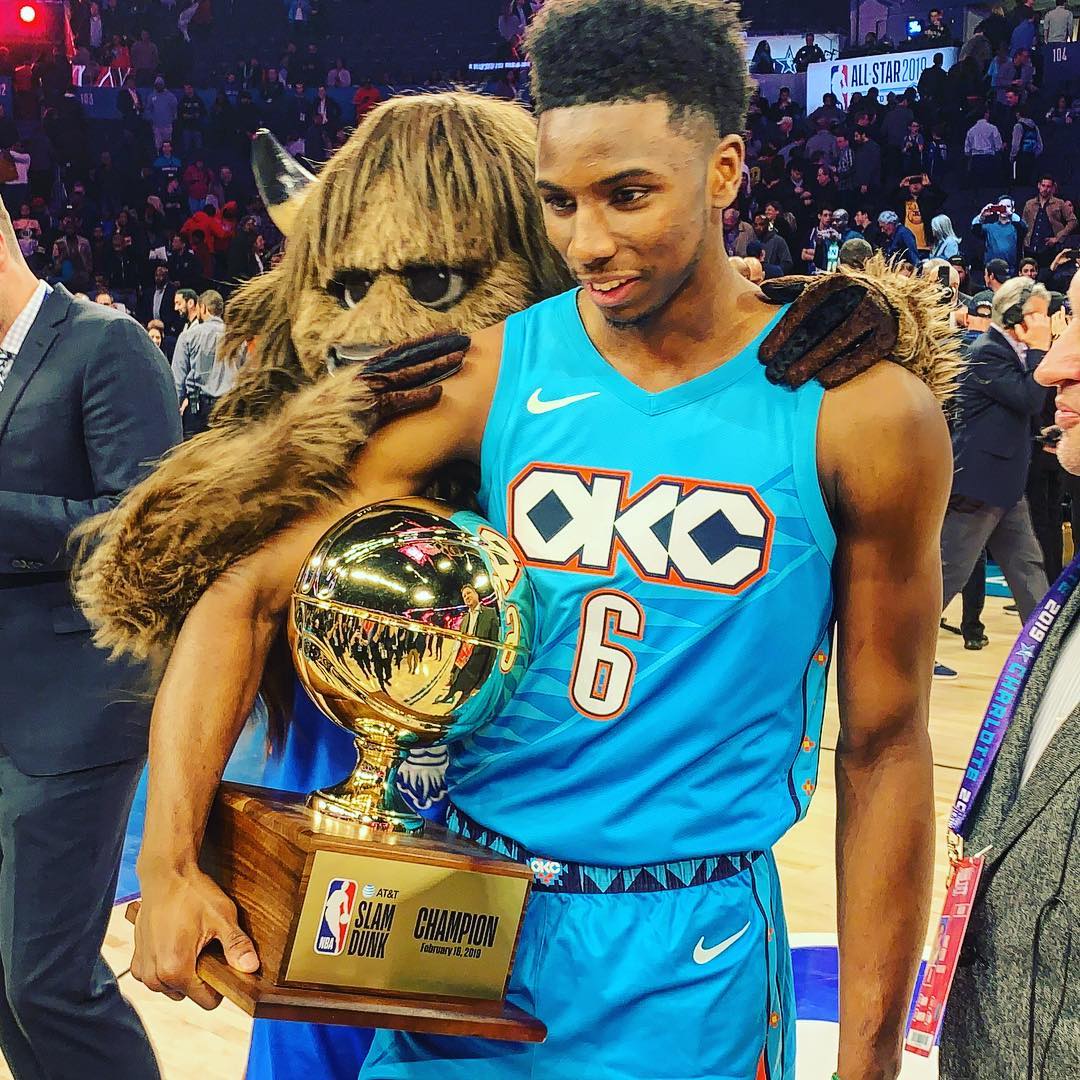
The Thunder have not ignored this part of Oklahoma’s history since their arrival. In fact, the franchise has done the opposite by inviting in their Native fans to feel like a part of the family.
“We take great pride in working with the Native American community in Oklahoma which deeply influences the cultural fabric of our state,” says Brian Byrnes, Senior Vice President for the Thunder.
One of the ways this has manifested is through Rumble the Bison, the team’s mascot. Bison, or the American Buffalo, has long been a vital part of many tribes’ way of life. They are a symbol of endurance, resilience and are still revered by many Native American tribes. Rumble even has an origin story that can be found on the team’s website.
It begins, “For hundreds of years the tale has been told around Native American campfires. A great herd of American bison was lost in the Arbuckle Mountains during a ferocious storm – the kind only Oklahoma can produce,” and continues to tell how one lone bison came to know the amazing strength and agility that can be seen on display at almost every Oklahoma City home game.
The Thunder’s dedication continues every November when they pick a night to bring in Natives from different tribes for a Native American Heritage Night celebration. This includes Native veterans who present the flags prior to the game, a Native singer for the National Anthem, and a Native performance for the half-time show. David Holt, a citizen of Osage Nation and Oklahoma City’s first Native American mayor, told me the Thunder are “more than just entertainment.”
“They’re really a civic institution,” Hold said.”So it matters what they embrace and highlight.”
Holt went on to talk about the 2018-2019 season’s City Edition jerseys, which have been the Thunder’s most public and wide-spread showcase of their dedication to the state’s Native population to date. The meaning behind the jersey’s intricate details, “designed to honor and uplift the Native American community in Oklahoma,” according to Byrnes, was outlined by the uniform’s designer here:
The best part about Oklahoma City’s dedication to Native inclusion is that there seems to be no plan to stop. Holt says that his election in 2018 is symbolic of a bridge the entire city is working to build to close any disconnect between Native and non-Native communities. He also mentioned the city’s plan to continue celebrating Indigenous People’s Day–something he started during his first year in office–and the First Americans Museum opening in 2021.
Together with the Oklahoma City community, the Thunder seem eager and dedicated to respecting the variety of Native American tribes that cover the state.
“The Thunder doing what they have done dovetails perfectly with all of that,” Holt, speaking of the Native emphases planned for the city, concluded. “I am confident their efforts will continue and I salute them for it.”


